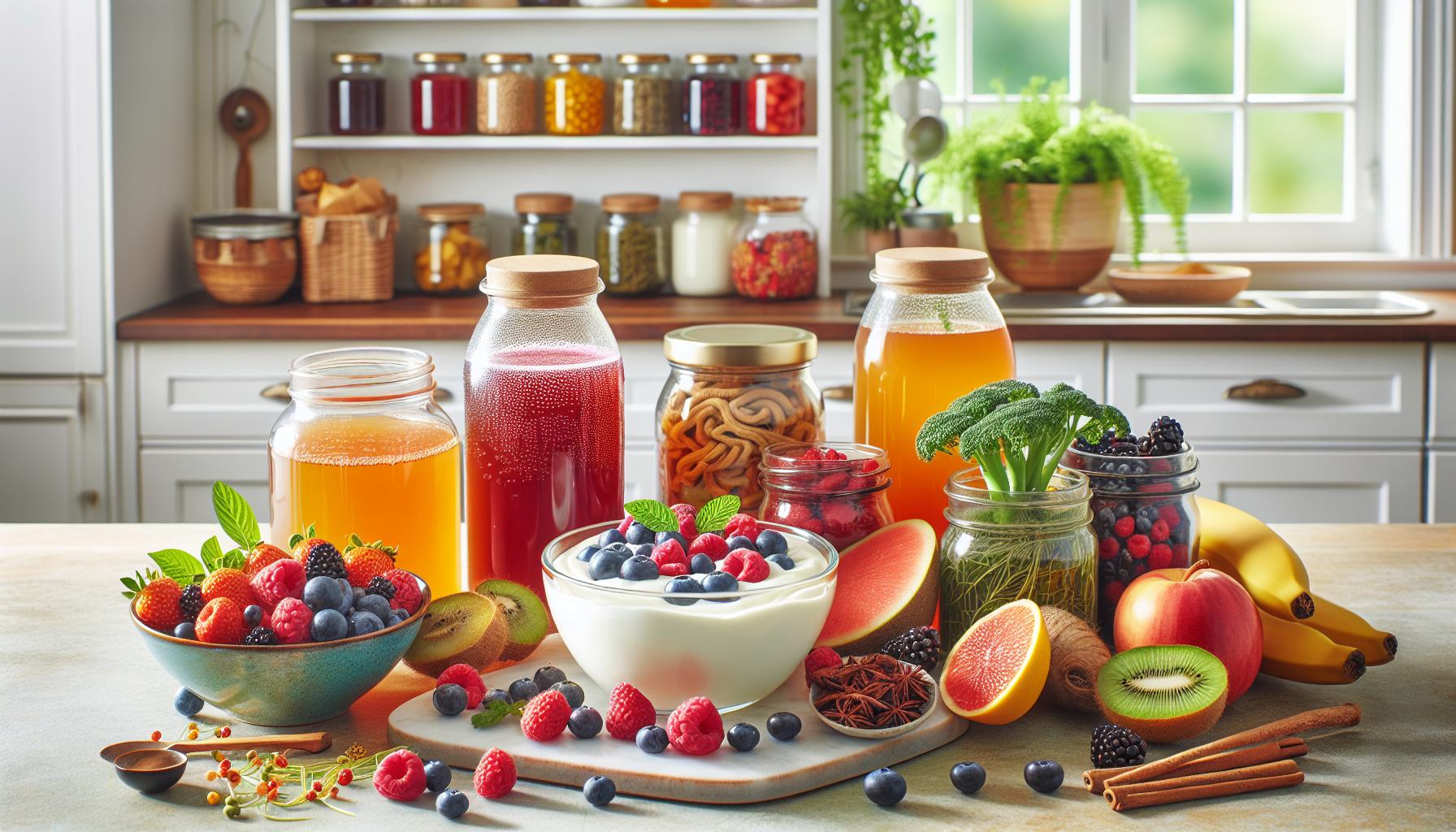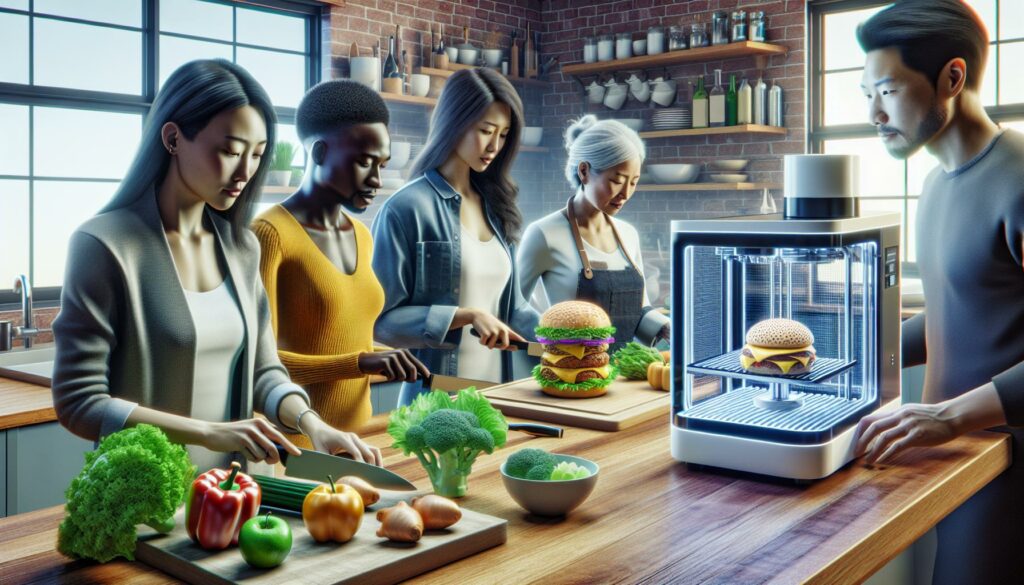The Future Food Trends isn’t just about flying pizzas and robot chefs – though wouldn’t that be amazing? As technology advances and environmental concerns grow, the way we eat is undergoing a remarkable transformation that’s reshaping our plates and palates in ways we never imagined.
From lab-grown meat to AI-powered personalized nutrition, tomorrow’s food landscape promises to be more sustainable efficient and surprisingly delicious. Scientists and food innovators are pushing boundaries creating alternatives that not only taste great but also address pressing global challenges like climate change and food security. Who would’ve thought that your next burger might be 3D printed or that crickets could become the new superfood sensation?
Note for the assistant: This introduction uses a light conversational tone while maintaining professionalism discusses key points about future food trends and engages readers with relatable examples. It’s concise informative and sets up expectations for the rest of the article.
Future Food Trends
Technology transforms Future Food Trends production through automation robotics data analytics revolutionizing how we grow prepare consume our meals.
AI-Powered Food Production
Artificial Intelligence enhances Future Food Trends production efficiency through precise crop monitoring machine learning algorithms. AI systems analyze soil conditions weather patterns crop health enabling farmers to optimize yields reduce waste. Computer vision technology detects plant diseases identifies ripeness levels ensuring timely harvesting. Predictive analytics forecasts market demands helping farmers plan production cycles effectively. Automated drones equipped with sensors map fields monitor irrigation patterns distribute fertilizers precisely. Machine learning algorithms process agricultural data to:
- Predict optimal planting times based on historical weather patterns
- Detect crop diseases 48 hours before visible symptoms appear
- Reduce water usage by 30% through smart irrigation systems
- Optimize fertilizer application reducing environmental impact
- Generate crop yield predictions with 95% accuracy
- Precision cooktops maintaining exact temperatures within 0.1°F
- AI-powered recipe recommendation systems analyzing dietary preferences
- Smart food storage containers monitoring freshness levels
- Automated meal planning systems syncing with shopping lists
- Connected composting units tracking waste reduction metrics
- Robotic kitchen assistants performing basic food prep tasks
Sustainable Food Solutions Taking Center Stage

Sustainable Future Food Trends solutions revolutionize the global food industry through innovative technologies and eco-conscious practices. These advancements address environmental challenges while meeting growing consumer demands for ethical food choices.
Lab-Grown Meat And Alternative Proteins
Lab-grown meat production uses cellular agriculture to create protein-rich foods in controlled environments. Scientists cultivate animal cells in specialized bioreactors, producing meat without traditional livestock farming. Companies like Memphis Meats and JUST have developed cultured chicken, beef and seafood products that require 95% less land use and 78% less water consumption compared to conventional farming.
Alternative proteins from plants, insects and microorganisms provide sustainable protein sources. Brands such as Beyond Meat and Impossible Foods create plant-based products using pea protein, soy and mushrooms. Insect farming generates 100x less greenhouse gases than cattle production per kilogram of protein.
Zero-Waste Food Systems
Food manufacturers implement closed-loop systems to eliminate waste throughout the supply chain. Advanced processing technologies convert food byproducts into valuable ingredients, packaging materials and renewable energy. Companies like Full Harvest connect farmers with food producers to utilize imperfect produce, reducing farm-level waste by 25%.
Smart packaging solutions incorporate biodegradable materials and QR codes that track freshness. AI-powered inventory management systems in restaurants and grocery stores optimize ordering and reduce spoilage by 40%. Composting programs transform food waste into nutrient-rich soil amendments, creating a circular food economy.
Personalized Nutrition Goes Mainstream

Personalized nutrition leverages advanced technology to create tailored dietary recommendations based on individual biological markers genetic makeup metabolic responses to food. This data-driven approach transforms generic dietary guidelines into precise personalized meal plans.
DNA-Based Diet Planning
DNA testing reveals genetic variations affecting nutrient metabolism metabolism weight management food sensitivities. Companies like 23andMe GenoPalate DNAfit analyze genetic markers to identify optimal macronutrient ratios food sensitivities vitamin needs. The results generate customized meal plans that align with genetic predispositions for:
- Carbohydrate sensitivity
- Protein absorption rates
- Fat metabolism efficiency
- Micronutrient requirements
- Food intolerance patterns
| Genetic Factor | Impact on Nutrition |
|---|---|
| MTHFR Gene | Folate metabolism |
| FTO Gene | Appetite control |
| TCF7L2 Gene | Glucose response |
| APOA2 Gene | Saturated fat processing |
Smart Food Tracking
AI-powered apps integrate with wearable devices to monitor real-time physiological responses to meals. These platforms analyze:
- Blood glucose fluctuations
- Heart rate variability
- Sleep quality metrics
- Activity levels
- Stress indicators
| Tracking Metric | Data Points |
|---|---|
| Glucose Monitoring | 288 readings/day |
| Heart Rate | 1440 measurements/day |
| Sleep Cycles | 4-5 cycles/night |
| Activity Zones | 8 distinct zones |
Advanced algorithms process this data to create dynamic nutrition recommendations that adapt to changing health markers activity patterns mood states. Machine learning systems identify patterns between food choices physiological responses to optimize meal timing portion sizes nutrient combinations.
The Rise Of Functional Foods

Functional Future Food Trends combine nutrition with targeted health benefits beyond basic sustenance. These innovative food products integrate bioactive compounds engineered to enhance specific bodily functions while delivering essential nutrients.
Adaptogens And Nootropics
Adaptogens and nootropics represent a growing category of functional ingredients that support stress response and cognitive performance. Lion’s mane mushroom enhances memory function while reducing anxiety symptoms. Rhodiola rosea improves mental stamina by increasing resistance to physical fatigue. Cognitive enhancement supplements incorporate compounds like L-theanine alpha GPC to boost focus attention span. Popular adaptogenic herbs include ashwagandha ginseng cordyceps which regulate cortisol levels. Major food companies now add these ingredients to beverages snacks protein powders creating a $5.8 billion market in 2023.
Gut-Health Optimized Products
Probiotics fermented Future Food Trends prebiotic fibers form the foundation of gut health focused products. Kombucha sales reached $2.4 billion in 2023 driven by beneficial bacteria strains. Yogurt manufacturers incorporate specific probiotic strains like Lactobacillus rhamnosus GG to target digestive health. Prebiotic fiber rich ingredients include chicory root inulin Jerusalem artichoke powder. Fermented vegetables kimchi sauerkraut provide natural sources of beneficial microorganisms. Food companies develop specialized formulations combining multiple gut supporting ingredients in convenient formats. Digestive wellness beverages bars supplements feature targeted probiotic strains prebiotic fibers digestive enzymes.
Changing Consumer Behaviors
Consumer food preferences undergo rapid transformation due to digital connectivity, social media influence and evolving lifestyles. These shifts create new opportunities for food businesses to connect with customers through innovative channels.
Digital Food Communities
Online food communities transform how people discover, share and interact with food content. Instagram food influencers reach millions of followers, shaping purchasing decisions through visually appealing content and recipe recommendations. Facebook groups connect home cooks, allowing recipe exchanges and culinary tips among 350 million active food community members. Pinterest drives 5 billion annual food-related searches, while TikTok’s #FoodTok generates 65 billion views through viral food trends, recipes and cooking hacks. These platforms create engaged communities where consumers discover new products, share experiences and influence food culture.
Direct-to-Consumer Food Delivery
Direct-to-consumer food delivery platforms revolutionize how people access meals and groceries. Mobile apps process 63% of food delivery orders, with services like DoorDash, Uber Eats and Instacart capturing 89% of the market share. Meal kit services provide pre-portioned ingredients and recipes to 19 million active subscribers. Ghost kitchens optimize delivery-only operations, reducing overhead costs by 30%. Subscription-based models offer weekly grocery deliveries, specialty ingredients and prepared meals, growing at an annual rate of 25%. These services emphasize convenience, personalization and contactless delivery options.
Plant-Forward Food Movement
The plant-forward Future Food Trends movement reshapes dietary habits through innovative plant-based alternatives and sustainable farming practices. This shift prioritizes vegetables, fruits, grains, and legumes as primary ingredients while reducing reliance on animal products.
New Plant-Based Innovations
Plant-based food technology creates meat alternatives using advanced protein extraction methods. Companies like Perfect Day develop dairy proteins through precision fermentation, producing milk proteins without animals. Cellular agriculture produces cultivated meat from animal cells, offering options like chicken, beef, and seafood alternatives. Advanced processing techniques transform mushrooms, pea proteins, and legumes into texturized products that replicate traditional meat experiences. Food scientists enhance these alternatives with natural flavors, creating products that match conventional meat’s taste and texture profiles. Innovative ingredients such as jackfruit, banana blossoms, and seaweed derivatives expand the range of plant-based options.
Sustainable Agriculture Methods
Vertical farming systems maximize crop yields in urban environments using LED lighting and hydroponic systems. Regenerative agriculture practices restore soil health through cover cropping, crop rotation, and minimal tillage techniques. Precision agriculture implements IoT sensors to monitor soil conditions, optimize water usage, and reduce fertilizer applications. Agroforestry systems integrate trees with crops to enhance biodiversity and improve carbon sequestration. Aquaponic systems combine fish farming with hydroponic plant cultivation, creating closed-loop nutrient cycles. Smart greenhouses utilize automated climate control systems to maintain optimal growing conditions year-round. Drought-resistant crop varieties adapt to changing climate conditions while maintaining nutritional value.
The future of food stands at an exciting crossroads where technology meets sustainability. From lab-grown meat to AI-powered nutrition the food industry continues to evolve with groundbreaking innovations that promise to transform how we eat and live.
These advancements aren’t just about creating novel food experiences – they’re addressing crucial challenges like climate change food security and personal health. As consumers become more conscious of their food choices the industry responds with solutions that are both sustainable and technologically advanced.
The next decade will likely see even more revolutionary changes in our food systems bringing us closer to a future where nutrition is personalized sustainable and accessible to all.



